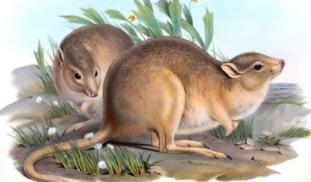Please wait...
About This Project
The desert rat-kangaroo is one of Australia's most mysterious small marsupials. Although we currently lack confirmation of the mammal's presence, recent promising sightings gives hope for its continued existence in Australia's remote Sturt Stony Desert. We will investigate these sightings using camera trapping, map the animals' distribution and habitat, and build the first habitat model for this species. If the animal is still out there, our team represents the best chance for its rediscovery.

Browse Other Projects on Experiment
Related Projects
How do polar bears stay healthy on the world's worst diet?
Polar bears survive almost entirely on seal fat. Yet unlike humans who eat high-fat diets, polar bears never...
Uncovering hidden insect diversity associated with a likely undescribed gall-forming midge
Does a likely undescribed species of gall-forming midge (pers. comm. Ray Gagné) on Eriodictyon plants (Yerba...
Macrofungi of the California archipelago
The eight islands of the California Archipelago are a well-studied biodiversity hotspot — but we know almost...



